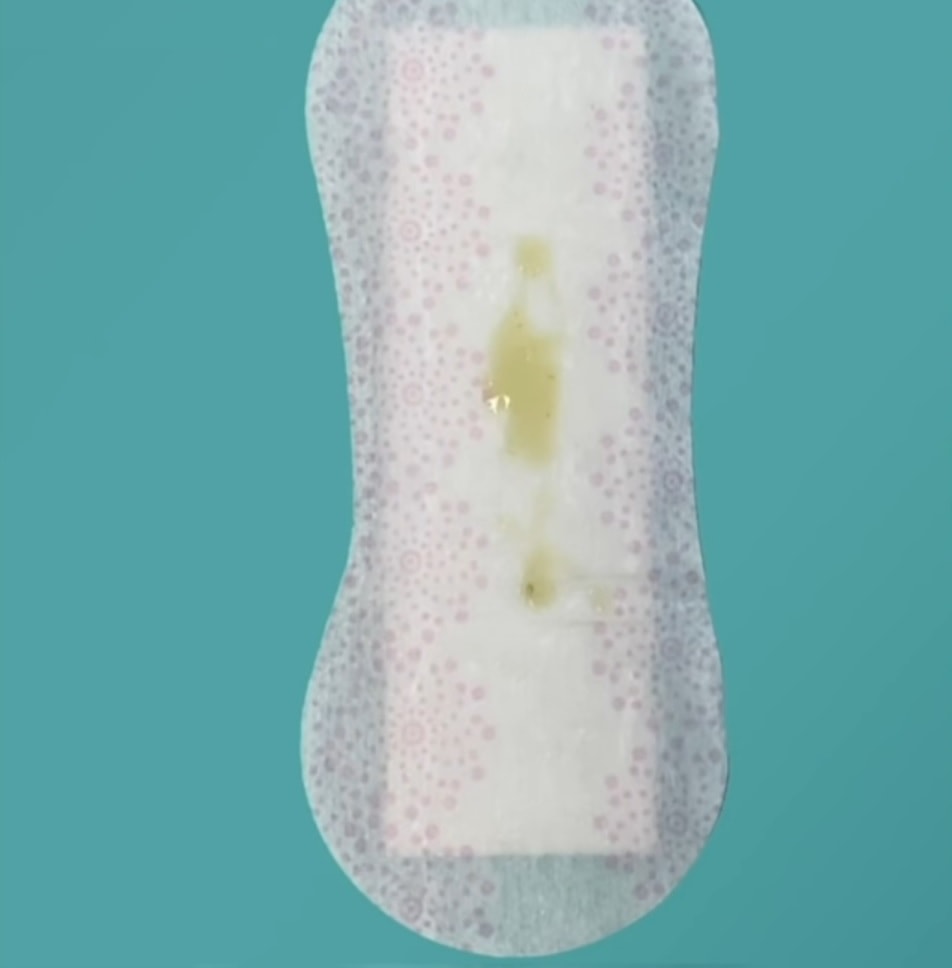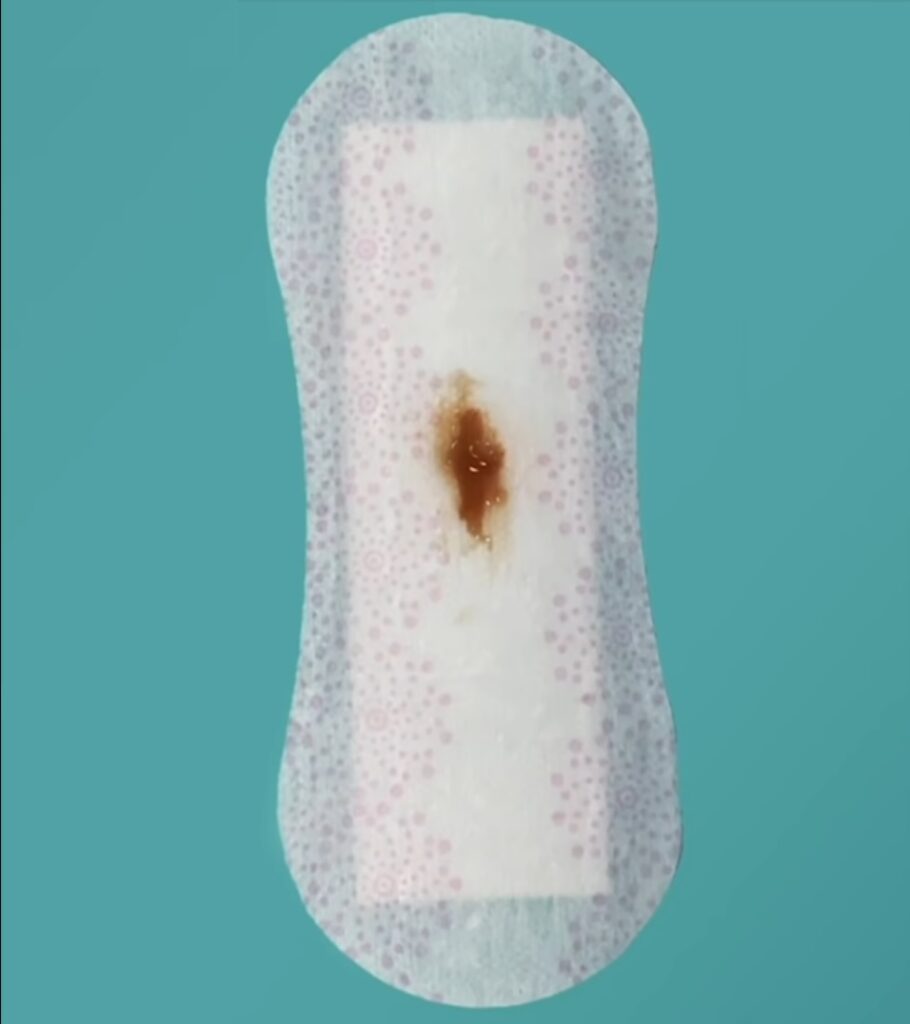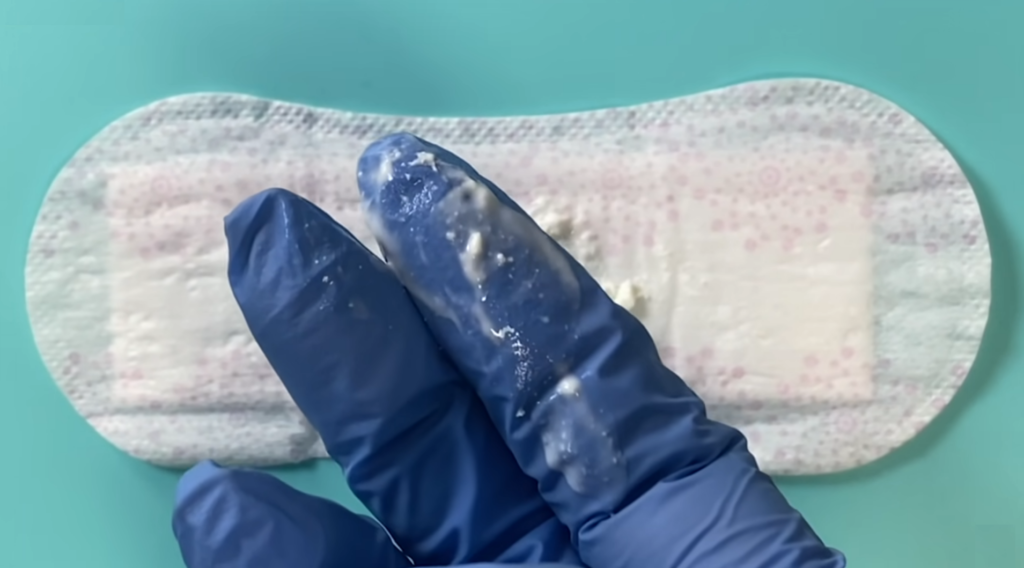Vaginal discharge is very common, it can happen at any age, but more precisely it happens after puberty. It only rings alarm bells when the color of the discharge is completely different to what your usual vagina discharges or it’s just something that you’re not expecting. Vaginal discharge can vary in amount, consistency, color, smell depending on where you are in your menstrual cycle and also depending on whether you are pregnant, ovulating sexually aroused it changes all the time. This article is an attempt to enlighten you on the possible causes of different types of vaginal discharges.
Yellowish Greenish Discharge
This is not normal and probably should ring alarm bells. A frothy Yellowish greenish discharge is a characteristic associated with an STI or STD.

Trichomonas vaginosis (TV) is the organism or parasite that causes an STD known as Trichomoniasis. This happens due to having unprotected sex with a person suffering from Trichomoniasis. Although, a very common non-viral STI. Trichomoniasis has a higher infection rate, more than Gonorrhea and Chlamydia combined. Almost, half of the patients are not aware of the contraction of Trichomonas vaginosis(TV). So when a person is unaware of being infected by a disease, he/she, unknowingly, is more likely to spread the disease to their healthy partners.
For the people who have symptoms, it’s like the one mentioned in the above picture.
Other symptoms of Trichomonas vaginosis are as follows
1.burning and stinging when passing urine
2.soreness around the lips of the vagina
3.itching around the vagina
4.Different types of smells associated with vaginal discharge
Trichomonas vaginosis is treatable using anti-biotics which has to be consumed by the patient and its partner and avoid having sex for at least a week.
Testing: Compulsory for you and your Current partner and/or previous partner(s) in the last 4 weeks.
The second possibility of Yellowish Discharge is Gonorrhea
Gonorrhea, a kind of STD, could lead to a discharge yellowish in nature. Both, Gonorrhea and Trichomonas vaginosis may have asymptomatic symptoms, so it is highly likely that it may get spread unknowingly to their partner(s). Also, there are chances that these diseases may go untreated for a long time.
So, you can confirm the infection of Gonorrhea when you have yellowish discharge flowing through your vagina alongside:
1.Abdominal pain
2.Burning and stinging sensation while passing urine
3.Intermenstrual bleeding
- Pain during sex
Over 4000+ Test Centers Nationwide. Order Testing Today! Coupon Inside!!
Red or Pink Discharge
This color discharge could be normal in most circumstances. The causes of red or pink discharge are as follows.

During Menstrual Cycle
So, when you are experiencing red or pink discharge when you are expecting your periods, then this could just be completely normal. This is because the red or pink color could be because of the blood(menstrual) around causing that color discharge.
Post-coital bleeding
This can happen after sex, you may observe red or pink discharge, within 30 mins to 24 hours. This can be due to the act of sex, where you have friction and there could be tiny cuts and scrapes in the vagina, which bleed and cause the vaginal discharge to be like pinky or tinged color.
Spotting
Sometimes, some women experience a pinky discharge or red discharge or just blood in before their periods. So they’re not expecting their periods let’s say for another few weeks but they’re getting a discharge that’s looking like their periods are about to come so this is called spotting and in medical terms, we would call it intermenstrual bleeding so bleeding in between your periods.
Dark brown color discharge

Towards the end of the period, most women find their discharge to be dark brown in color. This happens because of the slowness of the blood flowing through the vagina and the blood staying inside the vagina gets oxidized giving it a dark brown color.
When to worry…..
Pregnancy
If you are expecting your periods and you had unprotected (without condom) sex during this time and then you got this pink or red vaginal discharge around the time when your period would normally come, that is the time to ring alarm bells because you could be pregnant. Surprisingly, the ting of pink or red that you see, thinking that it might be your period may actually be something called implantation bleeding.
What happens is that your uterus is preparing for the period the lining is nice and thick and it’s got lots of blood vessels. Along comes the fertilized egg and it attaches itself to the nice plump lining and burrows itself in which could cause a tiny amount of bleeding which you may think as a pink vaginal discharge and you may think that periods are coming soon. But no, that’s the sign of pregnancy.
So if you’re in a situation where you’re seeing a pink vaginal discharge it’s not your normal period you’re a little bit late for your period and you know you had unprotected sex the best thing to do is get a pregnancy test.
Miscarriage
This is the second reason which could ring the alarm bells upon seeing Pink or reddish discharge. When you start noticing blood stains or pink vaginal during pregnancy and this color discharge may be the early signs of miscarriage and it needs immediate medical attention.
Menopause
If you have entered menopause, so if you hadn’t had periods for a year or close to a year and suddenly you start getting vaginal discharge which is pink or tinged red, even when it is not really bleeding that could be the cause of concern because it could even be the sign of endometrial cancer.
Creamy or white vaginal discharge

Cream or white vaginal discharge can be normal, if it is not associated with itching or burning or stinging or if it doesn’t have a foul smell and in small quantities. White vaginal discharge is common if your usual vaginal discharge is creamy or white.

If you have a white curdy, chunky or clumpy discharge, this is the most likely going to be thrush. It is a yeast infection, infected by the yeast from the vagina itself. Normally you don’t see this yeast, as its growth is controlled by the good bacteria inside the vagina. So when this good bacteria is hampered by anything, say a course of antibiotics, then the patient may likely get yeast infection as they overgrow. This overgrown amount of yeast is what gives white, clumpy, creamy, curdy discharge.
There is a point to be noted that in few cases the thrush can be asymptomatic. Few of those have the symptoms are vulval itching or burning or stinging, reddish swollen vaginal lips, painful sex(dyspareunia), or uncomfortable feeling while sitting. Sometimes the thrush may go by itself and may not require any treatment. There are certain exceptions though, during pregnancy, if they found a patient is having thrush while examination, the treatment is recommended. The treatment is usually done with antifungal, anti-yeast medication (tablets pessaries, and creams)
Grey vaginal discharge

It is the common type of discharge if you get Bacterial Vaginosis (BV), it’s not an STI or STD. It’s not caused by having sex but associated with the women that have sex. It is usually not associated with itching or irritation. BV can increase your risk of getting an STD such as chlamydia.
The other peculiar characteristic of the BV is that it has got this fishy smell, especially after a shower or after sex in some women.
Also read: Identify STD Discharge in men and women based on color, odor and consistency
BV changes the pH value of the vagina, so it may be due to douching, washing inside the vagina with certain soap, using perfume products all of these disturbs the pH value of the vagina causing overgrowth of certain types of bacteria which then gives this grey discharge.
If you see grey discharge, it is advisable to visit the doctor as bacterial vaginosis is treated using antibiotics in the form of table, gel, and cream.
Clear or No color vaginal discharge

This is your normal vaginal discharge, which is fairly transparent. It has no odor or a slightly acidic smell. The discharge varies in amount and inconsistencies depending on where you are in your period cycle.
The amount and consistency of discharge also vary if you are ovulating, sexually aroused, or breastfeeding. So at this time it can become stringy and stretchy and watery and other times it thickens up and it can be a little bit kind of snotty or it can be more runny and stringy and a bit more like egg white.
The above type doesn’t require any treatment, especially if it is not associated with any itching or burning or irritation of the vulva.
How to reduce your chances of having abnormal vaginal discharge at home?
Practice good personal hygiene by washing the vulva daily
- Avoid douching where you’re washing inside the vagina because this changes the “ph” and can cause you to have bacterial vaginosis (BV)
- Avoid perfumed soaps, bubble baths, vaginal deodorant, femme fresh, or feminine white. This could lead to grey discharge or can also predispose you to have a flush.
- Wipe from front to back after urination. This is to reduce the chances of having anal bacteria into your vagina
- Practice safe sex: use a condom or tell your partner to use a condom
- Wear cotton underwear: Synthetic fabric can encourage the growth of certain bacteria or yeast to give you thrush.
When to see a doctor?
- If you are bleeding in between your periods regularly
- If you’re having a bloodstain discharged after menopause
- If you’ve got unusual vaginal discharge such as that green, yellow, brown as mentioned above.
- If you have a discharge that’s associated with a fever or feeling unwell or cramps in the lower abdomen
References
Vaginal discharge: Clinical Review
https://www.ncbi.nlm.nih.gov/pmc/articles/PMC2099568/
Vaginal discharge by Vanishree L Rao : https://www.obstetrics-gynaecology-journal.com/article/S1751-7214(19)30206-4/pdfhttps://www.who.int/oral_health/action/communicable/en/


